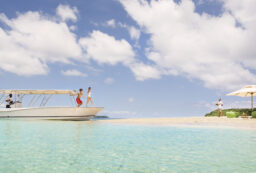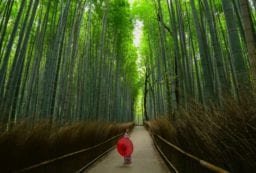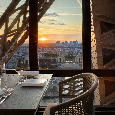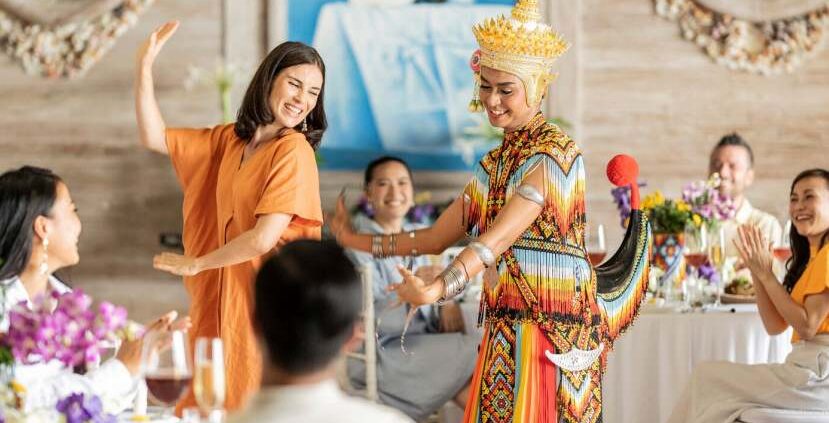
Southern Thailand is often associated with the busy tourist haven of Phuket Province and its appeal to young adult travelers looking for adventure. However, the region also offers plenty for travelers with more sophisticated tastes, including palatial beach resorts and culturally rich activities. Even with that in place, the next season of “White Lotus” will create a major paradigm shift toward it being even more of a go-to spot for luxury travel, from rustic to refined.

During the first half of 2024, filming of key scenes was happening at real-life luxury destinations Anantara Mai Khao Phuket Villas and Four Seasons Koh Samui. However, one doesn’t have to wait until 2025 to discover Southern Thailand’s lush lodging, world-class restaurants, outdoor athletic activities, wellness, wildlife exploration, romance, and stunning landscapes. While Phuket plays a pivotal role in “White Lotus,” the closing of some sites for filming opens up an opportunity for Phang Nga’s mainland and islands to transcend “hidden gem” status and Koh Samui’s Thai-owned high-end resorts to be discovered by travelers in North America, Europe, and beyond. With ferries regularly operating between these destinations, it may not be long before other islands like Phangan, or Koh Pha Ngan, are poised to have their moment.

Luxury properties of varying sizes, rich cultural attractions, and Michelin-star and “Bib Gourmand” restaurants promise to broaden the scope of what Southern Thailand has to offer travelers with discerning tastes. Though Phuket is replete with stunning beaches and five-star resorts, a 90-minute drive due north leads to Khao Lak. This collection of villages, nestled into Phang Nga Province and lining the Andaman Sea, is a natural and human-made miracle that emerged from the devastating 2004 earthquake and tsunami that leveled the region. The area is best explored with a rental, as motorbike and car rental Khao Lak gives travellers the most flexibility and freedom while still being convenient and affordable.

While boutique and branded luxury resorts helped regrow the economy in the years since 2004, they were designed to respect its geography, climate change, and the residents. The JW Marriott Khao Lak Resort & Spa is a prime example of a five-star property intentionally planned with authentic architectural flourishes and inspired landscaping that captures the natural geography, cultural motifs, and traditions that have prompted international travelers to fall in love with Thailand.

One of the resort’s most striking features is the 2.5-kilometer hybrid of lagoon and swimming pool snaking around the buildings with suites, fully-outfitted villas, restaurants, venue spaces, and a lobby/retail area. Clever use of trees, bridges, and plants also ensures that visitors on romantic, grown-up friend/girls’ weekends, or conferences and MICE functions can co-exist peacefully with those traveling with children, except for breakfast service at Waterfront during its peak hours. Other restaurants include Ta Krai’s, with its impressive pan-Thai weekly dinner buffet, Japanese restaurant, and Olive, helmed by noted chef de cuisine Vincenzo Sorrentino

The resort’s prolific activity program for kids, teens, and adults is beautifully devised, and there are ample opportunities to indulge in yoga classes and sound baths near the property’s functional garden away from its busier nucleus. This, in turn, makes off-property excursions to environmentally-focused attractions likePhangnga Elephant Park, Royal Thai Navy Sea Turtle Conservation Center, Ban Nam Kem Tsunami Museum, the Samet Nangshe Viewpoint, and locally-owned Michelin “Bib Gourmand”-rated restaurants like Nai Muang Khao Lak and Baan Khaolak Seafood add depth to a stay thanks to their support from the community as well as the government.

"One doesn’t have to wait until 2025 and the premiere of "White Lotus'" third season to discover Southern Thailand’s lush lodging, world-class restaurants, outdoor athletic activities, wellness, wildlife exploration, romance, and stunning landscapes."

Travelers preferring smaller-scale boutique resort luxury will find it at the 69-guest room Devasom Khao Lak Beach Resort and Villas, nestled between a natural lagoon and one side and the shores of Khuk Khak Beach. The land it was built on, once known as “Takola,” was a trading post along the Spice Road in the 6th and 7th centuries. Its architecture tells the story visually, with many of the doors, tiles, and bricks adorning the property sourced from India, Sri Lanka, and other stops along the Spice Road.

Three-time Michelin Bib Gourmand recipient TAKOLA is open to both Devasom guests and visitors outside the resort, and its nighttime feast is one of the highlights. While there is an eight-course tasting menu, it’s fun to mix and match from the full array of creatively reinvented curries, salads, and inspired cocktails. Respect for regional cooking traditions combined with a bit of whimsy shines in its signature Sakuna Chom Suan (fried shrimp presented as adorable chicks); Nuea Nam Tok with Grilled Beef (spicy grilled Australian Angus beef salad with roasted ground rice); Gaeng Pu Bai Cha-Phlu with Crabmeat (crab meat in curry with wild betel leaves with a rice vermicelli side); Gaeng Massamun with Chicken and Roti (chicken in Massaman peanut curry and coconut milk); and a Thai Omelet with Crabmeat.

While wellness-minded visitors can’t go wrong with a high-end resort spa, the free-standing La Vita Sana is a truly one-of-a-kind Khao Lak wellness destination focused on the region’s Indigenous foods, healing traditions, and cultural influences integrated with Thai, Chinese, and Ayurvedic modalities. Its landscaped herb and vegetable garden supplies ingredients for its cooking classes and its on-site restaurant. A multi-course lunch runs around $30 (990 baht) and proves that modern updates on Thai classics can easily fit in with a more health and fitness-conscious lifestyle. A full-afternoon visit to the clinic not only encompasses a blissful reinvention of a customized massage, facial, or body treatment, but also mini-workshops such as a tea ceremony with handy pointers on blending, preparing, and serving teas to address specific health concerns. One not only emerges relaxed but also better informed on Thailand’s medicinal plants and practices.

Not far from the ferry port and the regional airport, Koh Samui opens out to roads dotted with several heavy hitters in international luxury hospitality, including the aforementioned Four Seasons Koh Samui as well as Banyan Tree and Kimpton. Travelers seeking out an independently-owned resort with a distinctive aesthetic, vibe, and flavor will appreciate what Melati Resort & Spa (https://www.melatiresort.com) brings to an all-inclusive stay in Koh Samui. The five-star property near Bophut Beach and Chaweng Beach is expansive and gorgeously landscaped, belying the fact it only has 77 rooms, suites, and private villas, and private access to Thongson Bay. It’s also almost impossible to believe the resort is a short distance from Fisherman’s Village, which offers an eclectic mix of souvenir stands, nightlife, and boutique shopping.

Each dwelling is generous in size and decorated in hues and furnishings that perfectly bridge contemporary and traditional Thai aesthetics. Many of them are outfitted with an outdoor bathtub just outside the ample and well-outfitted bathroom/closet area and garden courtyard areas that act as a pretty buffer between the room and the public sections of the resort. The two-story “Grand Deluxe” suites up the ante with extras such as a separate shower room and outdoor tub on the second floor nestled into a private balcony with sofa overlooking views of the resort. Kan Sak Thong, the resort’s marquee restaurant, offers both Thai-French fusion cuisine as well as regional dishes with ingredients sourced from area farms and purveyors.

The crown jewel of the resort is its Melati Spa, awash in pale green, orchid purple, and pink hues, antique-inspired decorative pieces, and plush contemporary furniture tied together with fragrant jasmine wafting through the air. It is the wellness hub, where guests can register for Yoga, Muy Thai, and other fitness classes, purchase products from its skincare line, and sign up or check-in for its exclusive range of massages, body wraps, scrubs, and facials. Many of the treatments are preceded by a foot massage, customization using different oils proposed by the guest’s practitioner, and a cooling lemongrass tea blend.

As its name suggests, the signature “The Essence of the Orient” treatment fuses Thai, Balinese, Ayurvedic, and Turkish modalities. The “Indigenous Coconut Experience,” a nod to the island’s historic connection with coconuts, blends traditional herbs, locally sourced ingredients, and modern massage techniques. However, even the deceptively simple “Melati Massage” accomplishes several small miracles in the capable hands of a skilled practitioner. The spa also has a fully-appointed manicure and pedicure salon featuring OPI products, a waxing studio, a Thai massage room, a private treatment room with a shower, and a children’s spa room with its menu of kid-friendly treatments for a mommy-and-me day.
"On Koh Phangan, several interesting resorts and enlightening attractions are emerging that offer inspiring ways locals build sustainability into their daily lives. daily lives."
Over on Koh Phangan, associated with those crazy moon parties favored by young adults, several interesting resorts and enlightening attractions are emerging that offer inspiring ways locals build sustainability into their daily lives. While Chantaramas Beach Resort is a touch more humble than some five-star places selected by “White Lotus’” location scouts, it’s worth checking in for a few days. Designed with love and intention by a woman carrying on her family’s hospitality business legacy, it has a “Zero Waste” operations style that gets the guests involved. Kitchen staff and guests are encouraged to place food leftovers into compost bins around the property to keep its trees and plants well-nourished.
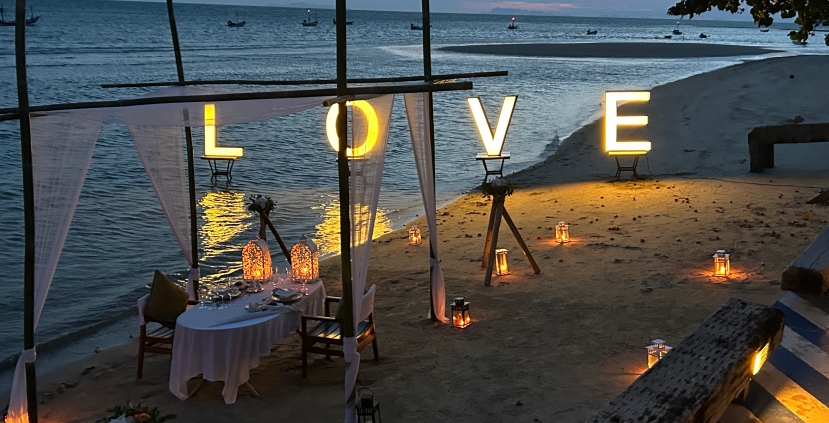
By night, the property’s Moon Deck Restaurant is as romantic as any five-star property’s beachside dining. The added influence of Burmese cuisine tapping into the owners’ family roots sets it apart. The kitchen is particularly proud of its Burmese Salad with Tea Leaves, followed by a mild and fragrant curry, deep-fried fish with three-flavor sauce, another course, and brown rice. The Emerald of Phangan, its signature cocktail, is a luscious gin-based beach cocktail alive with fresh ginger, lime, lemongrass, and house-made green apple sorbet. The server will also remind you with a smile that the herbs and organic vegetables used for the dinner and daytime cooking classes come from the resort’s organic herb farm.

The resort also offers a shuttle available to take guests into the main town of Thong Sala twice a day. It provides a great excuse to check out the weekly Saturday Walking Street Market from 4:00-10:00 pm on Thong Sala’s “Chinese Street” near the pier where the interisland ferry leaves off and picks up passengers. There are also message boards in the lobby detailing eco-focused activities at the resort, including yoga, and attractions around the island.

While the luxury properties in Southern Thailand put the nation’s reputation for welcoming hospitality front and center, exposure on “White Lotus” is sure to amp up its mystique and allure. However, diving deeper into its landscape, history, and cuisine beyond resort grounds guarantees a visit will be more meaningful than a beach escape.






